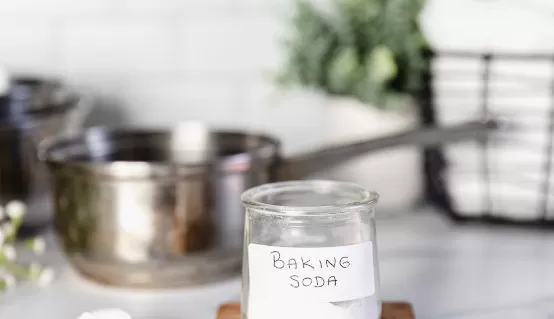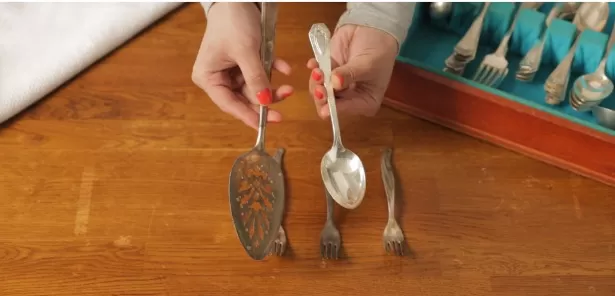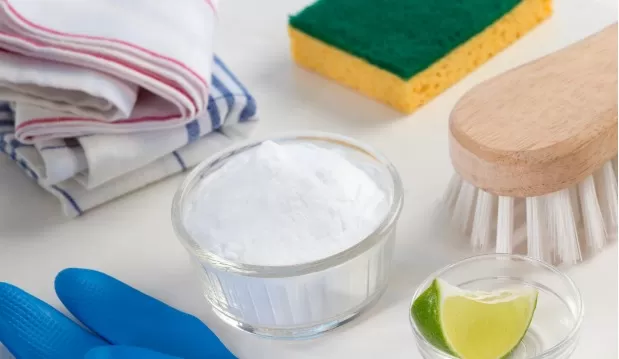Discover the incredible versatility of baking soda for household cleaning and freshening. save money by utilizing this affordable and effective ingredient for a wide range of ingenious home uses.
DIY Silver Cleaning: Baking Soda Method

If you have tarnished silver that needs a gleaming makeover, you don’t need to rely on expensive silver polish.
With a simple paste made from baking soda and water, you can effectively clean and restore the shine to your silver items. Follow these steps to make your silver gleam using the baking soda method:.
Create the Baking Soda Paste
In a small bowl, mix three parts baking soda with one part water to form a thick paste.
Adjust the quantities as needed, depending on the size and number of silver items you’re cleaning.
Apply the Paste to Silver
Take a clean cloth or sponge and apply the baking soda paste to the tarnished areas of your silver items.
Gently rub the paste onto the silver using circular motions. Ensure that you cover all the tarnished areas.
Rinse and Dry
Once you have thoroughly rubbed the baking soda paste onto the silver, rinse the items under warm water.
Ensure that all the baking soda residue is removed. Dry the silver thoroughly with a soft cloth to prevent water spots.
For Heavily Tarnished Silver
Prepare the Foil and Baking Soda Solution: Line your sink with aluminum foil, shiny side up.
Place the tarnished silver items on top of the foil. In a separate container, mix a cup of baking soda and a dash of salt.
Boil enough water to cover the silver items.
Soak the Silver
Pour the baking soda and salt mixture over the silver items, ensuring they are fully submerged.
Carefully pour the boiling water over the silver to cover it completely. Allow the silver to soak for a few minutes, or until you notice the tarnish starting to loosen.
Rinse and Dry
Remove the silver items from the solution and rinse them under warm water.
Gently dry the silver with a soft cloth to reveal its renewed shine.
Remember, this method is suitable for solid silver items and silver-plated items, but it may not be suitable for delicate or valuable pieces.
If you have doubts about cleaning a particular silver item, consult a professional or research specific care instructions.
By using the baking soda method, you can restore the beauty of your silver without the need for expensive silver polishes.
Enjoy the satisfaction of seeing your silver items gleam once again.
Say Goodbye to Soap Scum: Baking Soda Cleaning Methods

Soap scum can accumulate on bathroom surfaces, making them appear dull and dirty.
Instead of relying on harsh chemicals, you can effectively banish soap scum using baking soda, a natural and nontoxic cleaning agent. Try these baking soda cleaning methods to restore the shine to your bathroom:.
Baking Soda Scrub: For general cleaning of bathroom tubs, tiles, sinks, and fiberglass surfaces, sprinkle baking soda onto a clean, damp sponge.
Gently scrub the surfaces, applying even pressure. The baking soda acts as a mild abrasive to help remove soap scum.
Once you’ve thoroughly scrubbed the surfaces, rinse with cool water to reveal a clean and refreshed look.
Baking Soda Paste: For tougher bathroom cleaning tasks, such as stubborn soap scum buildup, create a paste using baking soda, salt, and liquid Dish Soap.
In a small bowl, mix equal parts baking soda and salt, then add enough liquid Dish Soap to form a thick paste. Spread the paste evenly over the surface you wish to clean.
Allow it to sit for a few minutes to penetrate the soap scum.
Wipe Clean and Rinse: After the baking soda paste has had time to work its magic, use a clean sponge or cloth to wipe away the paste from the surface.
The combined action of the baking soda, salt, and Dish Soap helps to loosen and remove soap scum effectively. Rinse the surface thoroughly with water to remove any residue.
These baking soda cleaning methods offer a safe and effective way to eliminate soap scum from your bathroom surfaces without the use of harsh chemicals.
Baking soda’s natural properties make it an ideal cleaner for various bathroom materials. Say goodbye to soap scum and enjoy a sparkling clean bathroom using this eco-friendly solution.
Baking Soda: The Laundry Freshener

Baking soda is a versatile household ingredient that can do wonders for freshening and brightening your laundry.
Here are some simple ways to incorporate baking soda into your laundry routine for fresher, cleaner, and brighter clothes:.
Boost Detergent Power: Enhance the effectiveness of your liquid laundry detergent by adding half a cup of baking soda to the wash cycle.
Baking soda helps to neutralize odors and remove stubborn stains, leaving your clothes cleaner and fresher.
Odor Removal for Gym Clothes: If you have particularly smelly gym clothes or heavily soiled garments, add an extra half cup of baking soda to the rinse cycle.
This will help eliminate odors and leave your clothes smelling fresh.
Pretreating Diapers: To tackle stubborn stains and odors on cloth diapers, create a solution by dissolving half a cup of baking soda in two quarts of water.
Soak the diapers in this mixture overnight before washing them as usual. Baking soda’s natural properties will help break down stains and neutralize odors.
General Odor Absorption: For clothes that have absorbed unpleasant odors, sprinkle some baking soda directly onto the fabric before washing.
Let it sit for a few minutes, then proceed with your regular washing routine. Baking soda will help absorb and eliminate odors, leaving your clothes smelling fresh.
Remember to follow the care instructions on your garments and adjust the amount of baking soda based on the load size and level of odor or stain.
Baking soda is a safe and effective addition to your laundry routine, providing a natural solution for freshening and brightening your clothes.
Note: It’s always a good practice to test a small, inconspicuous area of fabric before using baking soda on delicate or colored clothing to ensure there is no adverse reaction.
Cleaning Battery Corrosion with Baking Soda
Battery acid corrosion can build up on car, mower, and other household batteries over time, leading to poor performance and potential damage.
Baking soda can be used as a safe and effective way to remove battery acid corrosion. Here’s a step-by-step guide:.
Safety Precautions: Before starting, always remember to disconnect the battery terminals to ensure safety and prevent any accidental electrical discharge.
It’s important to work in a well-ventilated area and wear protective gloves and eyewear.
Mixing the Paste: In a small container, mix three parts baking soda with one part water to create a paste.
Stir until the mixture has a smooth consistency.
Applying the Paste: Using a damp cloth or sponge, apply the baking soda paste to the corroded areas on the battery terminals and any other affected parts.
Gently rub the paste onto the corrosion, ensuring thorough coverage.
Cleaning the Corrosion: Allow the paste to sit on the corroded areas for a few minutes.
The alkaline nature of baking soda will help neutralize the battery acid corrosion. Use a clean cloth or a soft-bristle brush to scrub away the corrosion gently.
Pay special attention to hard-to-reach areas.
Rinsing and Drying: Once you have removed the corrosion, rinse the battery terminals and other cleaned areas with clean water.
Ensure that no baking soda residue remains on the battery or terminals. Dry the battery and terminals completely using a clean cloth.
Reconnecting and Protecting: After the battery and terminals are completely dry, reconnect the battery terminals securely.
To help prevent future corrosion, apply a thin film of petroleum jelly or a battery terminal protectant to the battery terminals. This will help protect them from moisture and corrosion.
Remember, regular battery maintenance and cleaning can help extend the life of your batteries and ensure optimal performance.
If you’re unsure about the cleaning process or if the corrosion is severe, it’s always a good idea to consult a professional or seek assistance from a qualified technician.
Note: When working with batteries, always follow the manufacturer’s instructions and safety guidelines.
*The information is for reference only.